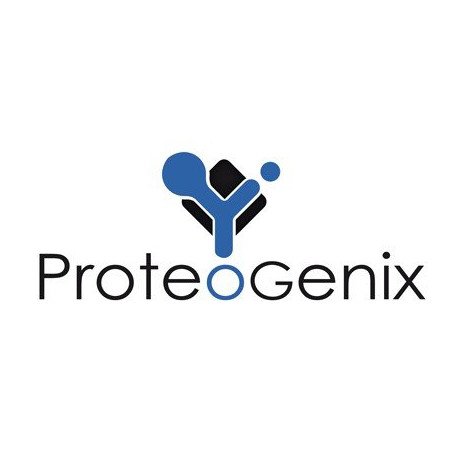Cart 0 Product Products (empty)
No products
To be determined Shipping
0,00 € Total
Prices are tax excluded
Product successfully added to your shopping cart
Quantity
Total
There are 0 items in your cart. There is 1 item in your cart.
Total products (tax excl.)
Total shipping (tax excl.) To be determined
Total (tax excl.)
Data sheet of Mouse Monoclonal antibody to human Polyglutamine
| Brand | ProteoGenix |
| Product type | Primary antibodies |
| Reactivity | Human |
| Clonality | Monoclonal |
| Host species | Mouse |
| Applications | E, WB, IC, IHC, IP |
More info about Mouse Monoclonal antibody to human Polyglutamine
| Brand: | ProteoGenix |
| Proteogenix reference: | PTGX-PQâ€1C2 |
| Product type: | Primary antibodies |
| Clonality: | Monoclonal |
| Product name: | Mouse Monoclonal antibody to human Polyglutamine |
| Host species: | Mouse |
| Target species: | Human |
| Reactivity: | Human |
| Applications: | E, WB, IC, IHC, IP |
| Size: | 100µl |
| Clone name: | 5TF1â€1C2 |
| Uniprot: | #N/A |
| Format: | Crude Ascites fluids |
| Immunogen: | N-terminal part of human TATA Box Binding Protein (TBP) |
| Specificity: | The epitope of the 1C2 antibody was found to be a homopolymeric glutamine stretch. The original Immunogen was the general transcription factor TATA box--binding protein (TBP) which contains a 38-glns stretch (Lescure &al). Other polyglutamine-containing proteins are recognized by the 1C2 antibody, notably those involved in several human neurodegenrative diseases caused by a CAG repeat expansion, like Huntington’s disease and spinocerebellar ataxia type 2,3 and 7 (Trottier et al Nature). Importantly, for proteins involved in these neurodegenerative disorders, the 1C2 antibody showed the remarkable property of detecting much better the pathological proteins that contain a polyglutamine expansion (>37 glns) than the wild type proteins (Trottier & al-1995,1998). 1C2 has been used to identify new neurodegenerative disease caused by polyglutamine expansion and to help for cloning of the corresponding affected genes (Trottier 1995-1998 ; Imbert 1996; Stevanin 1996). 1C2 is also able to detect intracellular inclusions, which is a hallmark of such diseases (Paulson, 1997). |
| Dilution: | 1/1000-1/20000 |
| Alternative names: | Anti-Polyglutamine Antibody |
| Isotype: | IgG1, k |
| Form: | liquid/frozen |
| Spec:conjugate/tag/label: | Unconjugated |
| Research area: | Neuroscience |
| Background information: | Mouse monoclonal anti-Polyglutamine antibody, clone 5TF1-1C2. Polyglutamine tract of polyQ tract is a portion of a protein consisting of a sequence of multiple glutamine units. Polyglutamine disease is an inheritable neurodegenerative disorders caused by the expansion of the trinucleotide repeat CAG which encodes the amino acid glutamine. Huntigton’s disease, dentatorubralpallidoluysian atrophy (DRPLA), spinobulbar muscular atrophy (SBMA) and types of spinocerebellar ataxia (SCA) belongs to a family of polyglutamine disease that caused impaired coordination. In these disorders, the non-pathogenic alleles include approximately 35 consecutive glutamine repeats and encode a normal polyglutamine domain. In comparison, the pathogenic alleles usually contain 39 or higher consecutive glutamine repeats. Higher repeat numbers lead to lower ages of onset. Patients with 40-60 glutamine repeats usually develop disease as adults, whereas patients with more than 60 repeats develop a juvenile onset disease. Each polyglutamine expansion disorder displays characteristic pathology, with neuronal loss evident in specific regions of the brain. |
| Publications: | 1: Inactivation of PNKP by Mutant ATXN3 Triggers Apoptosis by Activating the DNA Damage-Response Pathway in SCA3 Rui Gao, Yongping Liu, Anabela Silva-Fernandes, Xiang Fang, Adriana Paulucci-Holthauzen, Arpita Chatterjee, Hang L. Zhang, Tohru Matsuura, Sanjeev Choudhary, Tetsuo Ashizawa, Arnulf H. Koeppen, Patricia Maciel, Tapas K. Hazra, Partha S. Sarkar PLoS Genet. 2015 Jan; 11(1): e1004834. Published online 2015 Jan 15. doi: 10.1371/journal.pgen.1004834 PMCID: PMC4295939 2: ss-siRNAs allele selectively inhibit ataxin-3 expression: multiple mechanisms for an alternative gene silencing strategy Jing Liu, Dongbo Yu, Yuichiro Aiba, Hannah Pendergraff, Eric E. Swayze, Walt F. Lima, Jiaxin Hu, Thazha P. Prakash, David R. Corey Nucleic Acids Res. 2013 Nov; 41(20): 9570–9583. Published online 2013 Aug 9. doi: 10.1093/nar/gkt693 PMCID: PMC3814390 3: Targeting CAG repeat RNAs reduces Huntington’s disease phenotype independently of huntingtin levels Laura Rué, Mónica Bañez-Coronel, Jordi Creus-Muncunill, Albert Giralt, Rafael Alcalá-Vida, Gartze Mentxaka, Birgit Kagerbauer, M. Teresa Zomeño-Abellán, Zeus Aranda, Veronica Venturi, Esther Pérez-Navarro, Xavier Estivill, Eulà lia Martà J Clin Invest. 2016 Nov 1; 126(11): 4319–4330. Published online 2016 Oct 10. doi: 10.1172/JCI83185 PMCID: PMC5096913 4: Repeat Associated Non-AUG Translation (RAN Translation) Dependent on Sequence Downstream of the ATXN2 CAG Repeat Daniel R. Scoles, Mi H. T. Ho, Warunee Dansithong, Lance T. Pflieger, Lance W. Petersen, Khanh K. Thai, Stefan M. Pulst PLoS One. 2015; 10(6): e0128769. Published online 2015 Jun 18. doi: 10.1371/journal.pone.0128769 PMCID: PMC4472729 5: Ataxin-2 Regulates RGS8 Translation in a New BAC-SCA2 Transgenic Mouse Model Warunee Dansithong, Sharan Paul, Karla P. Figueroa, Marc D. Rinehart, Shaina Wiest, Lance T. Pflieger, Daniel R. Scoles, Stefan M. Pulst PLoS Genet. 2015 Apr; 11(4): e1005182. Published online 2015 Apr 22. doi: 10.1371/journal.pgen.1005182 PMCID: PMC4406435 6: Effects on Murine Behavior and Lifespan of Selectively Decreasing Expression of Mutant Huntingtin Allele by Supt4h Knockdown Hui-Min Cheng, Yijuang Chern, I-Hui Chen, Chia-Rung Liu, Sih-Huei Li, Seung J. Chun, Frank Rigo, C. Frank Bennett, Ning Deng, Yanan Feng, Chyuan-Sheng Lin, Yu-Ting Yan, Stanley N. Cohen, Tzu-Hao Cheng PLoS Genet. 2015 Mar; 11(3): e1005043. Published online 2015 Mar 11. doi: 10.1371/journal.pgen.1005043 PMCID: PMC4356588 7: Amyloid domains in the cell nucleus controlled by nucleoskeletal protein lamin B1 reveal a new pathway of mercury neurotoxicity Florian Arnhold, Karl-Heinz Gührs, Anna von Mikecz PeerJ. 2015; 3: e754. Published online 2015 Feb 5. doi: 10.7717/peerj.754 PMCID: PMC4327309 8: Characterization of forebrain neurons derived from late-onset Huntington's disease human embryonic stem cell lines Jonathan C. Niclis, Anita Pinar, John M. Haynes, Walaa Alsanie, Robert Jenny, Mirella Dottori, David S. Cram Front Cell Neurosci. 2013; 7: 37. Prepublished online 2012 Dec 6. Published online 2013 Apr 5. doi: 10.3389/fncel.2013.00037 PMCID: PMC3617399 9: Examination of mesenchymal stem cell-mediated RNAi transfer to Huntington’s disease affected neuronal cells for reduction of huntingtin Scott D. Olson, Amal Kambal, Kari Pollock, Gaela-Marie Mitchell, Heather Stewart, Stefanos Kalomoiris, Whitney Cary, Catherine Nacey, Karen Pepper, Jan A. Nolta Mol Cell Neurosci. Author manuscript; available in PMC 2013 Sep 26.Published in final edited form as: Mol Cell Neurosci. 2012 Mar; 49(3): 271–281. Published online 2011 Dec 8. doi: 10.1016/j.mcn.2011.12.001 PMCID: PMC3784251 |
| Storage: | Store at -20°C. Aliquot to avoid repeated freezing and thawing. |
| Delivery lead time in business days in europe: | 2-3 |
| Delivery conditions: | Dry Ice |
| Image: |  |
| Related products: | - Mouse Monoclonal antibody to human Progesterone receptor - Mouse Monoclonal antibody to human TFF1 (Trefoil factor 1 or pS2 protein) - Mouse Monoclonal antibody to human RAR Alpha |


